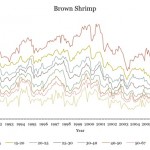
Source: Clean Technica <http://cleantechnica.com/2012/08/26/hurricane-isaac-has-a-wind-power-message-for-mitt-romney/>
Post Written by Lauren Martin
Americans anxiously anticipated the arrival of Hurricane Isaac, a Category 1 storm that killed 7 people, flooded regions of Louisiana, and dumped more than 20 inches of rain in some areas this past week. Every time there is a hurricane, CNN, MSNBC, and FOX show 24-7 coverage of what Jon Steward calls “Hurricane Porn.” Hurricane Isaac intrinsically roused memories of recent disasters in the Gulf Coast, including Hurricane Katrina and the BP Oil Spill, accentuating the media flurry that enveloped the nightly news. Natural disaster activity in the Gulf Coast over the past decade has become increasingly politically charged and particular attention to presidential nominees in this campaign season dictated a lot of what is reported on in the media. The real question at hand is if this is just voyeuristic ‘disaster porn’ or is there a substantive policy reason or set of reasons to be focused on gulf hurricanes?
DISASTER POLITICS
So, how does Hurricane Isaac relate to Mitt Romney and President Obama’s campaign anyway? The media and general public have routinely scrutinized Presidents for their response to natural disasters. Whether it be applauding Herbert Hoover in the Mississippi Flood of 1927 or questioning why President Bush flew over the damages of Hurricane Katrina in 2005 instead of touching down, the public eye looks upon the leaders of our country with heightened awareness in times of need.
Governor Mitt Romney visited Louisiana August 31, while President Obama visited on New Orleans the following Monday. While both candidates deviated from their campaign trails to evidence their empathy for those suffering Americans in need of assistance, it gave them yet another seemingly “apolitical” topic that already attracted enough media attention that a public brawl must ensue.
Official press direct from the White House Press Secretary Jay Carney examined Isaac’s damages with barely any mention of the Hurricane with his statements: “It is worth noting that last year there was an effort to underfund the money that’s used to provide relief to Americans when they’ve been hit by disasters..and that effort was led by Congressman Paul Ryan”. The media soaked this up but Carney couldn’t revel in his condescendence of Ryan too long before representatives of the Ryan-Romney campaign refuted these claims by describing their disaster relief platform as “a critical obligation and should be treated as a high priority within a fiscally responsible budget”.
Hurricane Isaac allows candidates to temporarily elevate natural disasters as an aspect of each respective candidates’ campaign agenda. Although it can highlight the divergence between their policies, it has no lasting fortitude when people step into their offices on Monday and Hurricane Isaac crawls form front-page news to an afterthought by Friday for many Americans.
I agree that leading up to the Presidential Election, how could Hurricane Isaac not become politically charged? But, as the hurricane porn subsides, I’ll tell you what you missed. Hurricane Isaac encapsulates important economic and environmental components that should mean more to Americans that ending up in the back pages of the Wall Street Journal.
ECONOMY
Everyone loves to talk about “risk management” in our economy. Well guess what, the environment poses incredible risks to our economy. Every natural disaster impedes the intrinsic workflow of local activity. Hurricanes have economic implications that stretch far greater than their geographical regions. Paradoxically, not all of these implications negatively affect our economy, as rebuilding after the hurricane can actually be a boon for economic growth particularly in the construction industries.
However, in the short-term, analysts predict that there are damages in gas prices and economic growth. The halt of oil and natural gas production is forecasted to cause more than a $750 billion loss, which is 0.1 percent of annualized real GDP growth. The G7 called for a lift in oil production to negate this lack of supply, which bolstered up crude oil prices for a brief period.
ENVIRONMENT
There are several environmental implications of hurricanes in the gulf. One concern is that recent perceived increases in hurricane activity are a sign of global climate change. The United States Global Change Research Fund found that “hurricane intensity and associated storm surge will be among the most serious consequences of climate change”. (www.globalclimatechange.gov/usimpacts) These findings forecast that lower topographical regions where sea level is rising will be more frequently and intensely affected, especially on account of greater loss of land-mass, which serves as a buffer for coastal areas.
In contrast, however, some were hopeful that Hurricane Isaac could help alleviate the present nation-wide drought, affecting roughly 63% of the continental US, although it failed to sufficiently do so.
Finally, years hurricane can reduce hypoxia (low oxygen) conditions in the Gulf. The hypoxic zone, or dead zone, in the Gulf is a seasonal phenomenon that results from nutrient runoff from Midwestern agriculture, hot summer temperatures, and lack of mixing among strata in the water column. Hypoxia has potential impacts on shrimp and oyster harvest in the U.S. Hurricanes cause mixing among strata in the water column which can temporarily increase oxygen levels and reduce the size of the dead zone.
So, there you have it. The real affects of Isaac in the midst of the captivating and enthralling hurricane porn you have been watching on CNN, MSNBC, and FOX
Sources:
6) http://www.bloomberg.com/news/2012-08-29/hurricane-makes-campaigning-tricky-for-president-obama.html
7) http://www.huffingtonpost.com/2012/09/03/obama-hurricane-isaac_n_1852720.html


